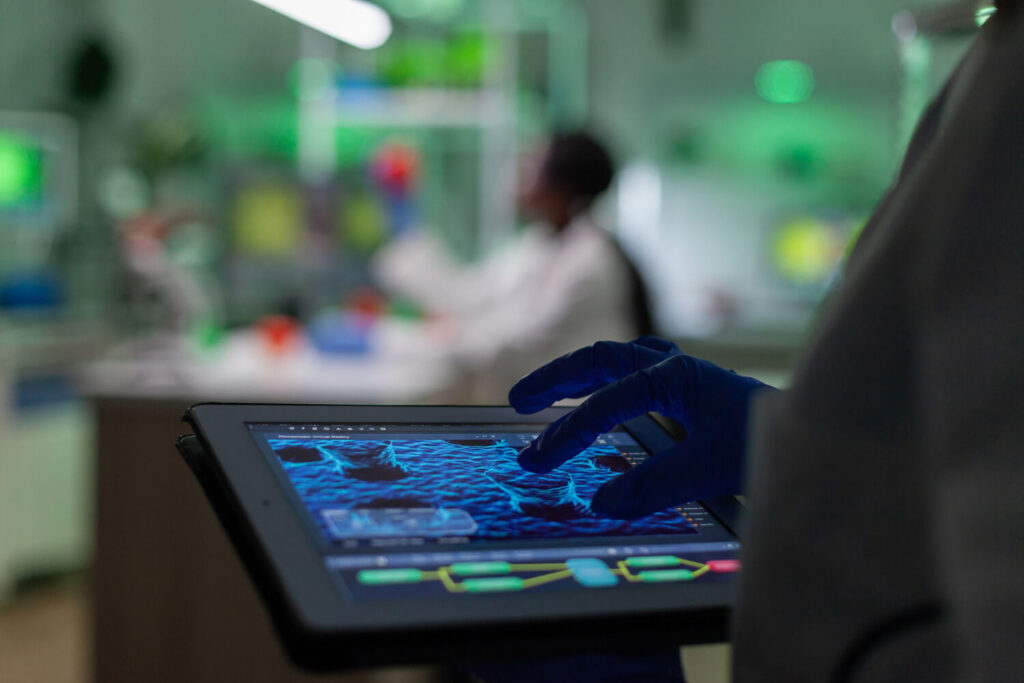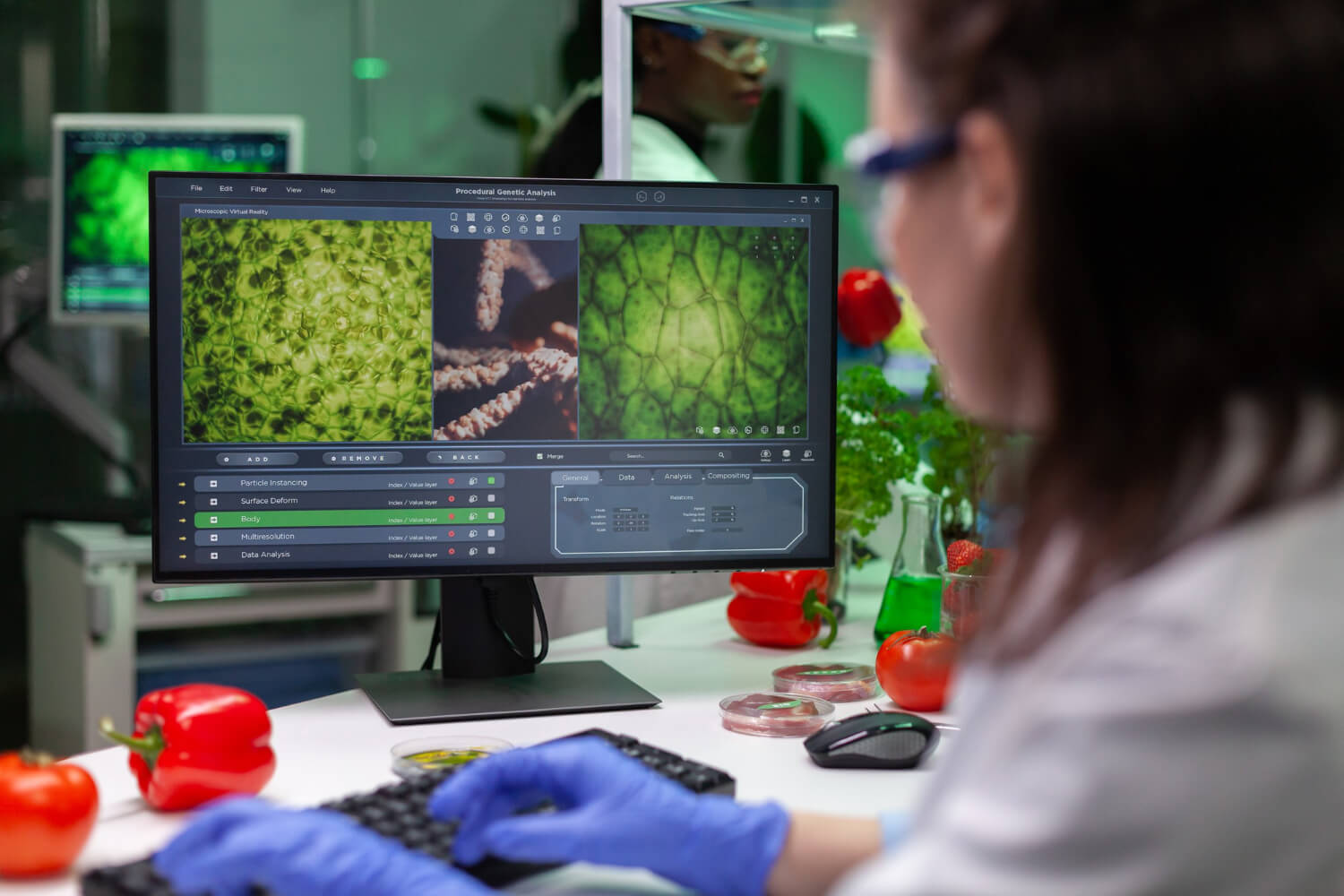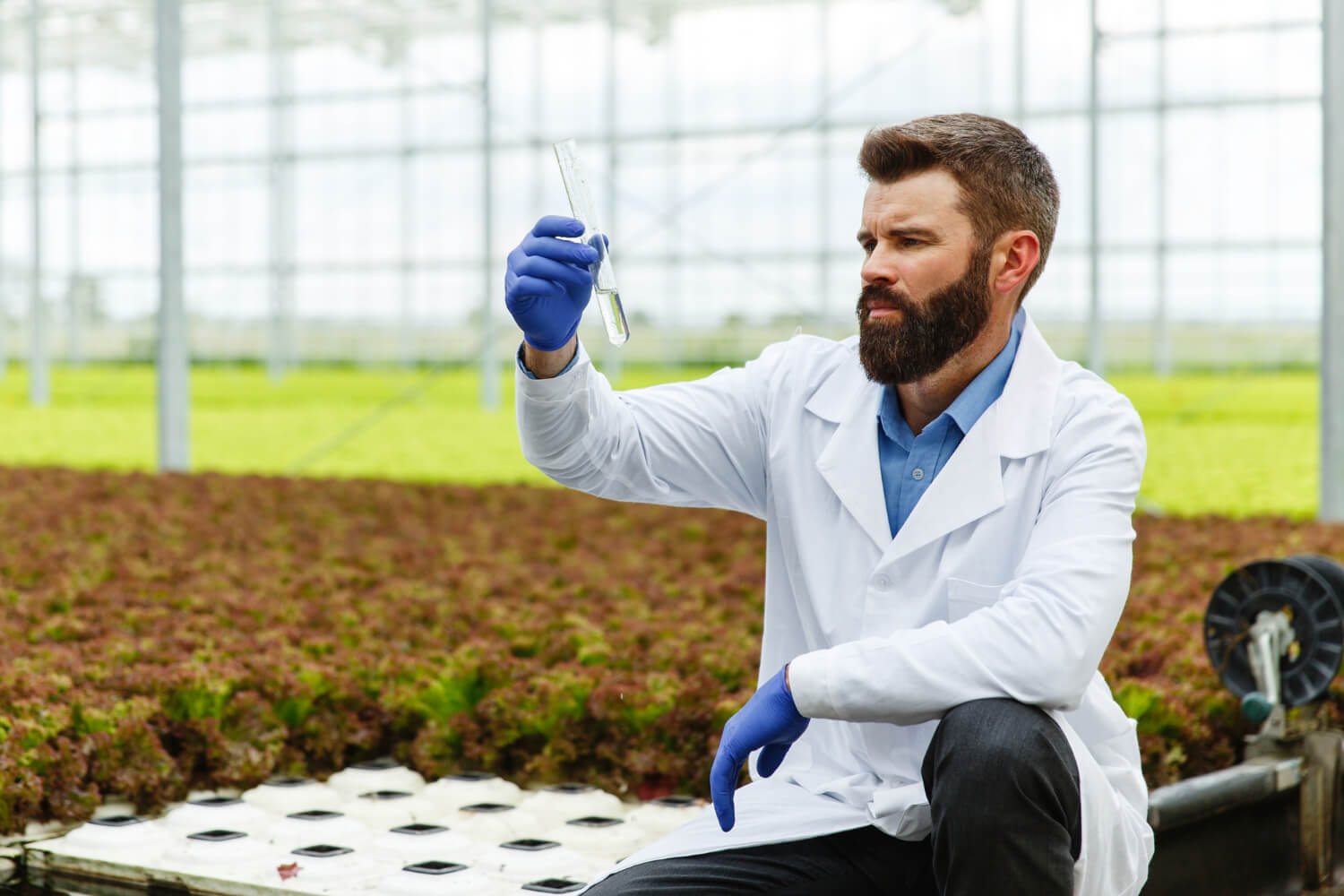In the rapidly evolving world of biotechnology, bioreactors stand at the forefront of innovation, playing a crucial role in the development and production of a wide range of biological products. From pharmaceuticals to agricultural solutions, the efficient and scalable operation of bioreactors is pivotal to meeting the demands of a growing global population and the pressing need for sustainable solutions. However, scaling up production within these complex, nonlinear systems presents a myriad of challenges, from the intricacies of biological processes to the nuances of system integration and automation. The journey from laboratory-scale experiments to large-scale production is fraught with technical and operational hurdles that require not only a deep understanding of biology and engineering but also a strategic approach to technology application. This article delves into the sophisticated strategies essential for scaling up production in bioreactors, guiding biotech companies through the maze of operational enhancements, cost efficiency, and technological advancements necessary for success in today’s competitive landscape. Join us as we explore the path to effective scaling, where innovation meets implementation, and discover how your biotech business can achieve unprecedented growth and efficiency.
Choosing the Right Combination of Bioreactor Sizes
Choosing the optimal combination of bioreactor sizes is a critical first step in scaling up production efficiently. This decision significantly impacts not only the reliable reproduction of results but also the material and operational costs, among other vital factors. The conventional wisdom that favours a smaller number of large bioreactors for their apparent cost-efficiency in materials and simplified manual monitoring and control is often challenged by the nuanced benefits of incorporating smaller reactors into the mix.
Smaller bioreactors offer a level of flexibility and control that is hard to replicate in their larger counterparts. They allow for more precise replication of growth and quality results, making scaling a fine-grained endeavour. This precision can lead to reductions in electricity and nutrient costs and provides the versatility to allocate a portion of bioreactors for divergent purposes, such as testing different products or conducting separate experiments. The adaptability of using a diverse range of bioreactor sizes also introduces resilience into the production process. Should an issue arise with one reactor, it impacts a significantly smaller portion of the total production, ensuring more continuity and less downtime. For instance, cleaning or maintaining a single small bioreactor marginally affects the overall output, as opposed to the substantial disruption caused by servicing a large bioreactor.
However, the integration of multiple bioreactor sizes into a cohesive production strategy requires careful consideration of the biotech operation’s specific needs and long-term goals. Balancing the benefits of smaller reactors’ scalability and reproducibility with the material cost efficiencies offered by larger bioreactors demands a nuanced understanding of both the biological processes at play and the operational dynamics of biotech production. This balance is not static; it must be continuously assessed and adapted as production scales up or down, as market demands shift, and as new technological solutions become available.
In essence, the strategic selection of bioreactor sizes forms the foundation upon which scalable, efficient, and flexible biotech production is built. It’s a decision that encapsulates the complexities of biological system management and the imperatives of modern biotech business operations, heralding a tailored approach to scaling that is both scientifically sound and economically viable.

Advantages of Automation in Bioreactor Systems
The integration of automation within bioreactor systems introduces a transformative approach to scaling up production, addressing the inherent complexities and variability of biological processes. Automation offers a suite of advantages that not only streamline operations but also enhance the precision and reliability of biotech manufacturing. By adopting automated solutions, biotech companies can significantly reduce operational costs per bioreactor, enabling the efficient management of a larger number of units with less human intervention.
One of the primary benefits of automation is the ability to continuously monitor and control individual bioreactors with unparalleled accuracy. Through the use of sensors, electronically controlled valves, pumps and other actuators, alongside advanced microcontrollers and industrial controllers (PLCs, PACs), companies can achieve real-time adjustments to maintain optimal conditions for growth and production. This level of control is pivotal in ensuring the consistent quality of biotech products, mitigating the risk of batch failure due to environmental fluctuations or human error.
Furthermore, automation facilitates the bidirectional integration of bioreactors with both local software services and cloud-based platforms. This connectivity enables the seamless aggregation and analysis of data across the entire production ecosystem, from the micro-level environment within a single bioreactor to the macro-level operational trends across facilities. By harnessing IoT technologies, companies can leverage predictive analytics and machine learning algorithms to anticipate system failures, optimise resource consumption and tailor growth conditions to specific bioprocess requirements.
The automation of data analysis and system adjustments extends beyond simple operational metrics like temperature or pH levels. It encompasses complex data types, such as micrographs and spectrophotometer readings, applying sophisticated AI techniques to draw actionable insights. This level of analytical depth supports not only the maintenance of equipment through predictive algorithms but also the dynamic optimisation of biological environments to maximise yield and efficiency.
In summary, the strategic application of automation in bioreactor systems empowers biotech companies to scale their operations with confidence. By reducing the reliance on manual monitoring and control, automating critical data analysis, and embracing the integration of bioreactors with advanced software solutions, companies can achieve a level of operational excellence and product consistency that sets new standards in the biotech industry.

Integration and IoT in Bioreactors
The integration of Internet of Things (IoT) technology into bioreactor systems represents a leap forward in the biotech industry’s ability to scale up production intelligently and efficiently. This integration extends beyond mere automation, fostering a connected ecosystem where bioreactors and associated devices communicate seamlessly, enhancing the oversight and adaptability of biotechnological processes.
At the core of IoT integration is the concept of smart bioreactors—units equipped with sensors and actuators that not only collect real-time data but also interact with each other and with central management systems. This networked approach allows for an unprecedented level of synchronisation across various production stages, ensuring that adjustments in one bioreactor are informed by the conditions and outcomes of others. Such connectivity facilitates a holistic view of operations, where decision-makers can identify patterns, predict outcomes and make informed strategic adjustments on the fly.
Moreover, the IoT framework supports the implementation of local gateway services, which act as intermediaries between on-site devices and broader cloud-based platforms. These gateways enhance data security and reliability, providing a robust infrastructure for the vast amounts of information generated by bioreactor networks. They also enable the deployment of sophisticated cloud architecture, capable of processing and analysing data at scale. This cloud connectivity ensures that insights gleaned from the bioreactor network are accessible to researchers, engineers and executives anywhere, anytime, fostering a collaborative environment that drives innovation.
The impact of IoT on bioreactor integration extends to maintenance and operational efficiency as well. With IoT, systems can be designed to not only alert operators to issues but also to predict potential failures before they occur, scheduling maintenance activities proactively to minimise downtime. Additionally, IoT integration opens avenues for integrating bioreactor systems with third-party software and hardware, ranging from lab equipment to enterprise resource planning (ERP) systems, ensuring a seamless flow of information across all levels of the organisation.
In essence, the integration of IoT in bioreactors is about creating an intelligent, interconnected production environment that transcends traditional boundaries. It enables biotech companies to navigate the complexities of scaling up with greater agility, leveraging data-driven insights to optimise every aspect of the production process. This connected future holds the promise of not just enhanced operational efficiency but also the potential for breakthroughs in biotechnological research and product development.

Enhancing Efficiency with Advanced Data Analysis
Advancing operational efficiency in bioreactor systems pivots on sophisticated data analysis. By delving deep into the wealth of data generated by these complex systems, biotech firms can unlock insights pivotal for streamlining processes and enhancing production outputs. This strategic application of data analysis transcends mere observation, allowing for predictive interventions and real-time optimisations that markedly elevate system performance.
Key to this process is the utilisation of machine learning and other algorithms to sift through diverse datasets, ranging from environmental conditions within bioreactors to the molecular details of the biological materials being processed. This approach enables the identification of patterns and relationships that might elude traditional analysis, offering a predictive edge that can anticipate and mitigate potential issues before they impact production. Furthermore, machine learning models adapt and improve over time, continuously refining their predictions and recommendations based on new data, ensuring that operational strategies remain at the cutting edge of efficiency.
Moreover, the incorporation of advanced analytics extends the capability to not just react to system dynamics but also proactively shape them. Algorithms can forecast the optimal environmental settings for different stages of biological growth, adjust parameters in real time to maintain these conditions, and even suggest modifications to bioprocess protocols that could yield better results. This level of analysis and intervention facilitates a more nuanced control over bioreactor operations, reducing waste, enhancing yield and ensuring product consistency.
In a landscape where efficiency and innovation are closely intertwined, the strategic leveraging of data analytics emerges as a cornerstone for competitive advantage. It equips biotech firms with the tools to navigate the complexities of bioprocessing, transforming data into actionable intelligence that drives smarter, more efficient and ultimately more successful bioreactor operations.
Optimising Systems with Simulations and Physical Testing
Optimising bioreactor systems for scalability and efficiency requires a meticulous approach that blends theoretical models with empirical evidence. Simulations and physical testing stand at the forefront of this strategy, providing a sandbox for exploring the vast landscape of possibilities in bioprocess optimisation. By leveraging these tools, biotech companies can fine-tune their operations, reduce risks associated with scaling, and innovate with confidence.
Simulations, powered by sophisticated computational models, offer a low-cost and risk-free environment to test hypotheses and predict the outcomes of changes in bioreactor conditions. These virtual models can mimic the complexity of biological systems and the operational nuances of bioreactor networks, allowing researchers to explore the impacts of various parameters on growth rates, product quality and system resilience. From adjusting nutrient flows to experimenting with different temperatures or pH levels, simulations provide valuable insights that guide the optimisation process. Additionally, the integration of data science and machine learning algorithms with simulations enhances their predictive accuracy, enabling more reliable forecasts of system behaviour under a range of scenarios.
Physical testing, on the other hand, grounds the theoretical insights from simulations in the tangible realities of the lab or production facility. Through controlled experiments and prototype testing, biotech companies can validate the assumptions and predictions made during the simulation phase. This empirical evidence is crucial for fine-tuning bioreactor designs, calibrating control systems and verifying the scalability of production processes. Physical testing also plays a vital role in iterative design processes, where feedback from each test cycle informs subsequent improvements and innovations.
The synergy between simulations and physical testing fosters a holistic optimisation strategy. By iteratively refining models with data gathered from physical tests, biotech companies can develop highly efficient, scalable bioreactor systems. This cycle of simulation, testing, and refinement accelerates the pace of innovation, enabling the rapid deployment of optimised bioprocesses that meet the growing demands of the biotech industry.
Smart Experimentation
Smart experimentation, guided by AI-informed design, is revolutionising the way biotech research and development unfolds, enabling quicker discovery of research results and improvements in production processes. By harnessing the power of artificial intelligence, biotech firms can intelligently design experiments that account for a myriad of variables, both seen and unseen, which traditional methods might overlook. This AI-driven approach not only accelerates the pace of innovation but also ensures a deeper understanding of the complex interplay between various factors within biological systems.
Crucially, AI-informed experimentation understands the limitations of existing models, recognising that biological systems are replete with hidden variables that can significantly impact outcomes. By incorporating machine learning algorithms, researchers can predict the most effective experimental designs, anticipate possible outcomes and adjust their approaches in real-time, based on continuous data analysis. This adaptive experimentation process allows for the exploration of a broader range of conditions and variables, uncovering insights that would otherwise remain hidden.
The importance of not assuming perfect models when analysing results and designing experiments cannot be overstated. AI and machine learning offer the agility to navigate the inherent uncertainties of biotech research, suggesting new avenues of investigation that challenge existing assumptions. This approach fosters a more nuanced understanding of biological processes, enabling researchers to iteratively refine their models and hypotheses with each experiment cycle.
Smart experimentation facilitated by AI equips biotech companies with the tools to advance research outcomes and process improvements at an unprecedented pace, making R&D more scalable. By embracing the complexity of biological systems and leveraging the predictive power of artificial intelligence, the biotech industry can push the boundaries of what’s possible, driving forward innovations that are both more efficient and effective.
Integrating Third-Party Systems
In the journey to scale up bioreactor production, integrating third-party systems plays a pivotal role. This encompasses a broad array of lab hardware and software, from industrial controllers and data analytics platforms to project management tools. Establishing a seamless communication network between these systems streamlines operations, enhances data integrity and paves the way for innovation by ensuring real-time access to comprehensive insights.
The strategic fusion of external technologies not only enriches the bioprocessing ecosystem with advanced functionalities but also optimises workflow efficiency and project management. However, successful integration hinges on compatibility, data security and compliance, necessitating a judicious selection of solutions that align with the company’s technical needs and operational values. Through thoughtful integration of third-party systems, biotech firms can unlock new levels of efficiency and scalability, positioning themselves at the forefront of the industry.
Holistic Knowledge for Holistic Strategies
Scaling up production in bioreactors demands more than just a singular focus on biology or engineering; it requires a holistic knowledge base that spans across physics, mechatronics, information technology, solution architecture and beyond. This multidisciplinary understanding is crucial for devising strategies that not only enhance system performance but also ensure the consistency of research outcomes and production outputs. By integrating insights from diverse fields such as statistics, business and logistics, biotech companies can develop comprehensive approaches that address the multifaceted challenges of bioprocessing.
The synergy of these diverse knowledge areas facilitates the creation of innovative solutions tailored to the complex dynamics of biotechnological systems. For instance, applying principles of physics can optimise the flow and mixing within bioreactors, while insights from IT and solution architecture can improve data management and system integration. Furthermore, an understanding of business and logistics is essential for aligning technological advancements with market demands and supply chain efficiencies.
Embracing this broad spectrum of expertise enables biotech firms to navigate the intricacies of scaling up with greater agility and precision. It fosters an environment where holistic strategies are developed, considering not just the technical aspects of bioreactor operations but also the broader implications on production scalability, economic viability and environmental sustainability. This comprehensive approach is the cornerstone of success in the rapidly advancing field of biotechnology, driving both innovation and competitive advantage.
Conclusion
In conclusion, scaling up production in bioreactors is a complex endeavour that requires a nuanced understanding of biological systems, advanced technological integration and a holistic approach to problem-solving. By harnessing the right combination of bioreactor sizes, embracing automation and integrating third-party systems, biotech companies can significantly enhance their operational efficiency and production capabilities. Moreover, adopting smart experimentation strategies and leveraging holistic knowledge across various disciplines can lead to innovative solutions that ensure the consistency and reliability of biotechnological processes.
At the heart of these advancements lies the potential to revolutionise biotech production, making it more scalable, efficient and adaptable to the demands of the future. However, navigating this landscape of opportunities demands expertise, foresight and strategic planning. Whether you’re looking to optimise your current operations or explore new avenues for scaling up, the journey towards enhanced bioreactor production begins with a conversation.
We invite you to take the first step towards unlocking the full potential of your biotech operations by booking a discovery call with us today. Let’s explore how our tailored strategies can elevate your production processes and set the stage for groundbreaking success in the biotechnology industry. Book a discovery call to start your journey towards scalable innovation.


